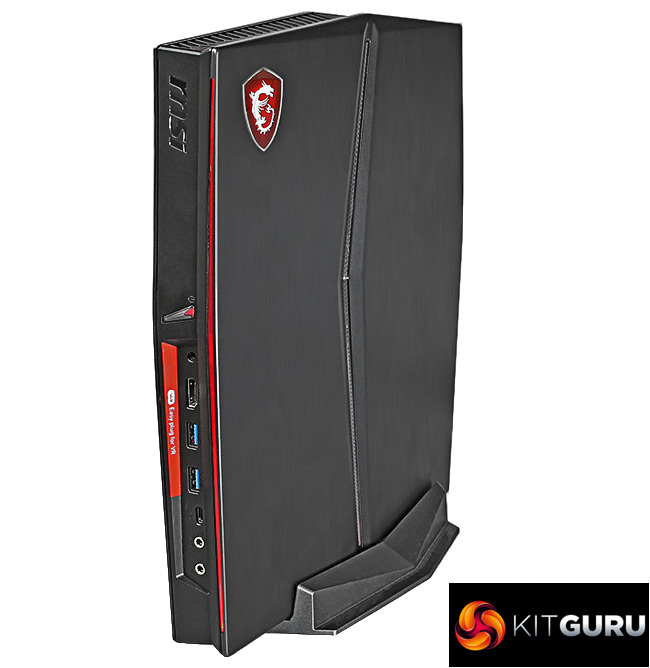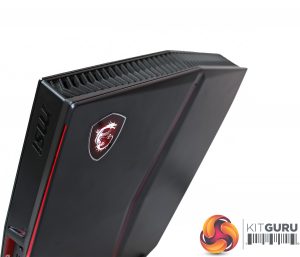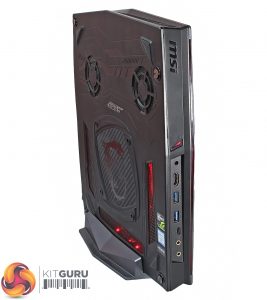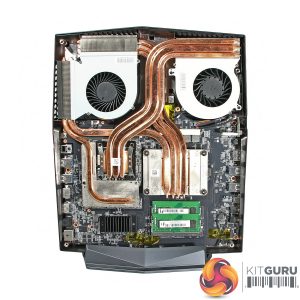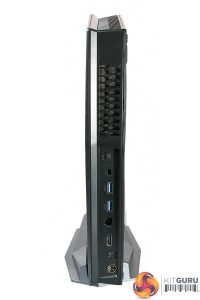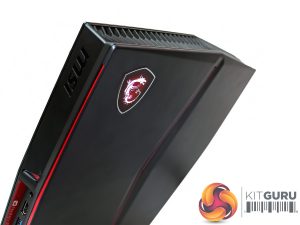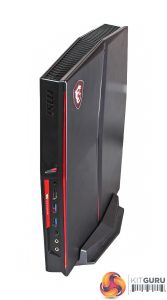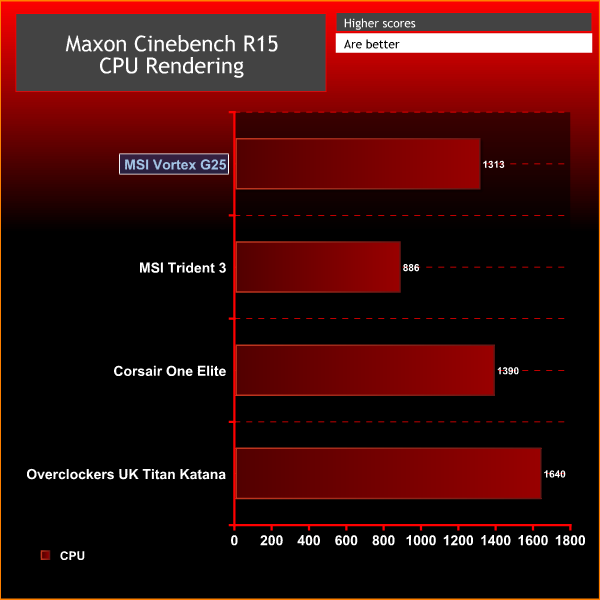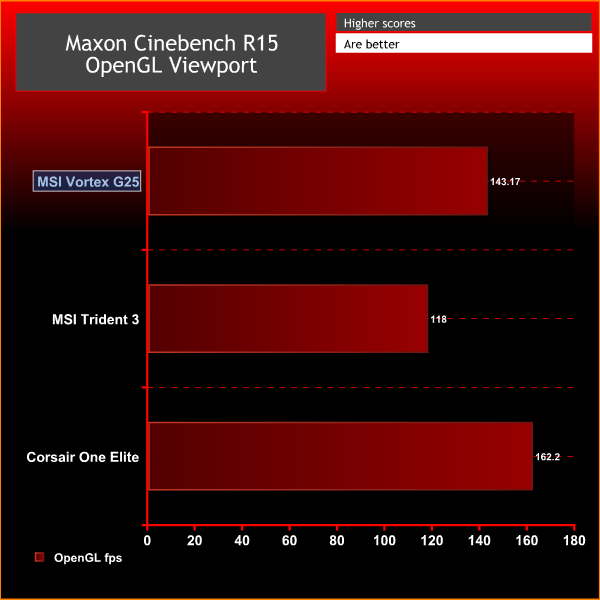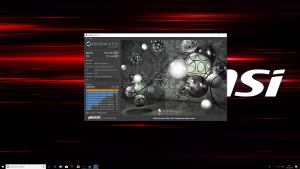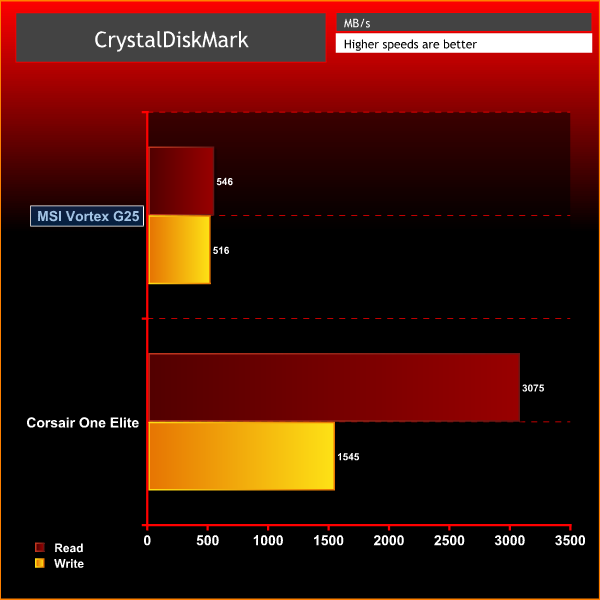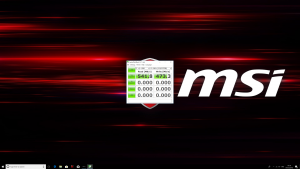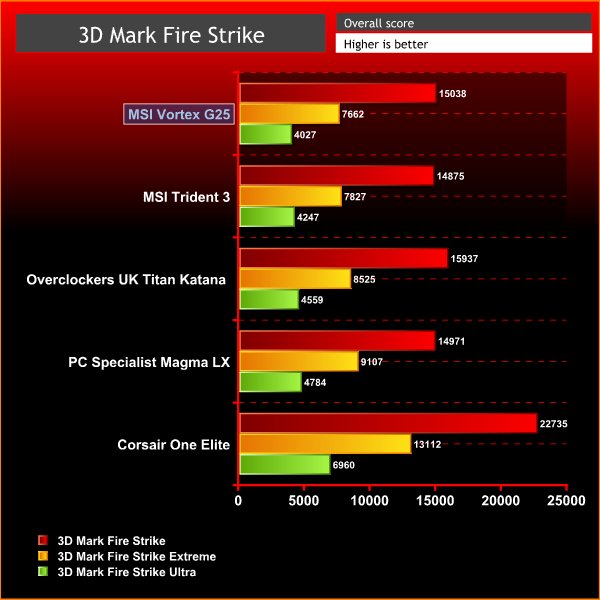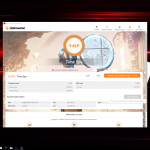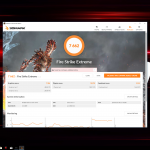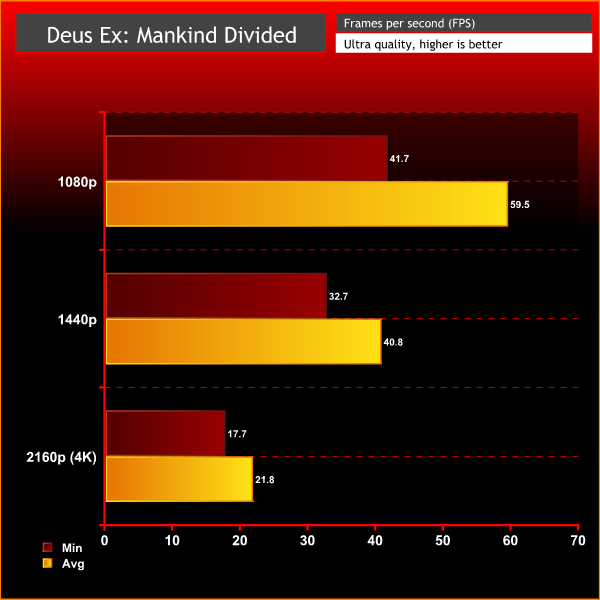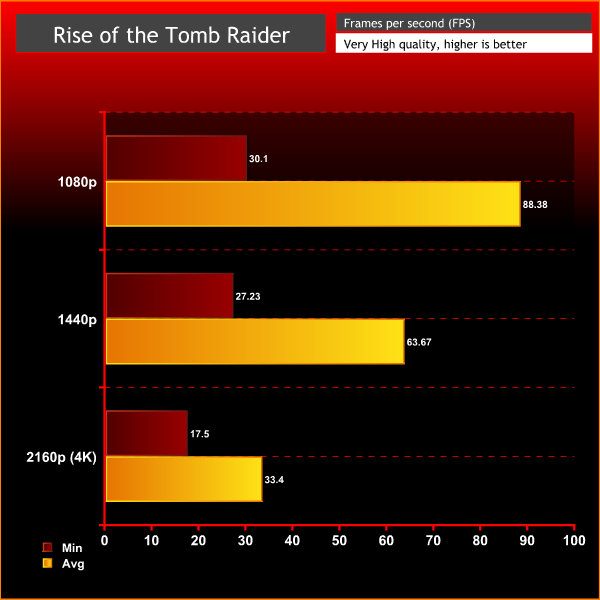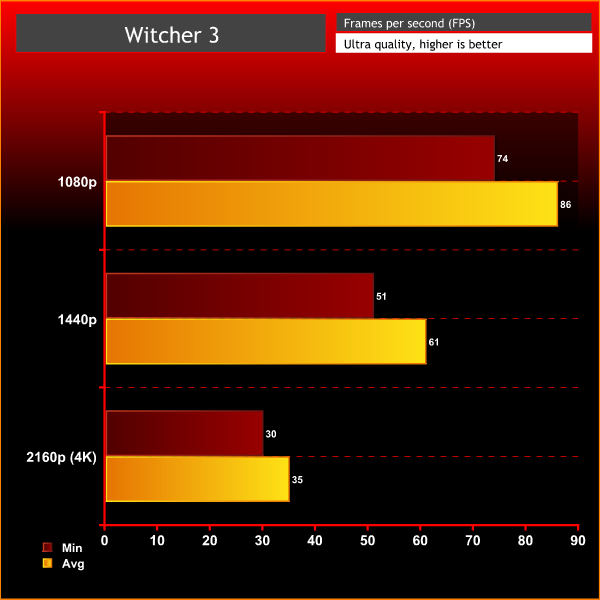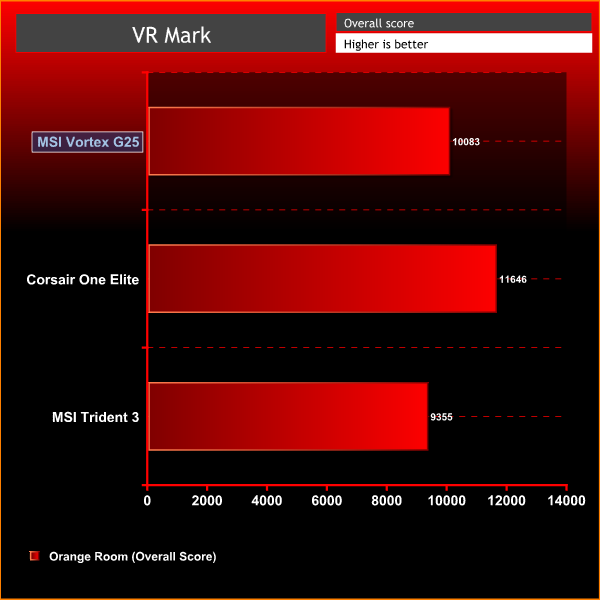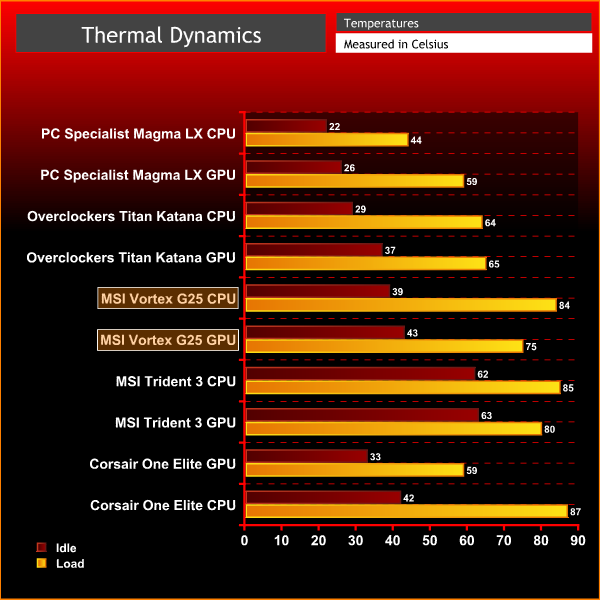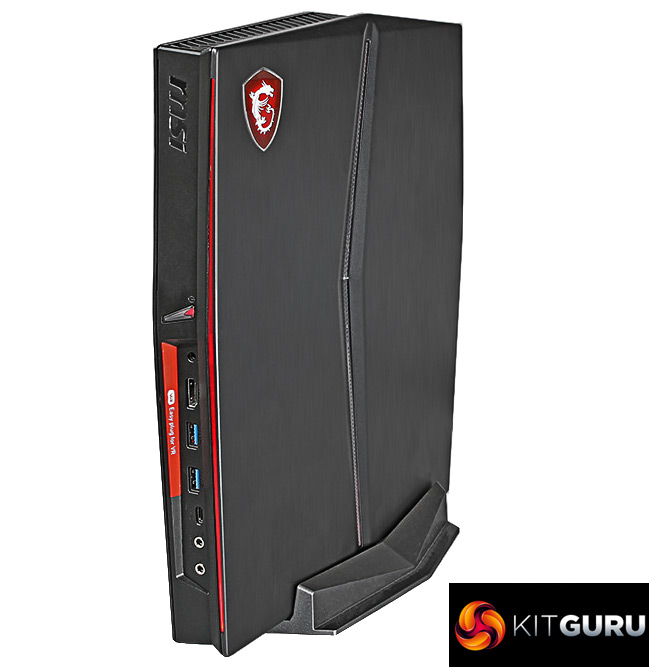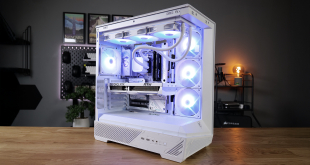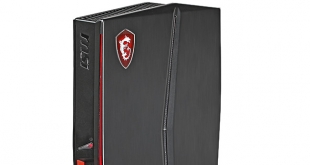
We’re seeing more adventurous machines emerging from big-brand firms these days – and the MSI Vortex G25 is one of the best that’s appeared in recent months. It’s one of the smallest systems we’ve ever seen and, despite that, it crams in an Intel Core i7 processor and an Nvidia GeForce GTX 1070 graphics card.
The downside, though, seems to be the price. The MSI Vortex G25 tips the scales at £1,885. That’s much more than you’ll pay for a full-size system with similar components. Is the G25 still worth a look? Let's find out.
Specifications:
- CPU: Intel Core i7-8700 (3.2Ghz – 4.6GHz)
- CPU cooling: Bespoke low-profile cooler
- Motherboard: Bespoke MSI Z370
- Memory: 16B Kingston 2,400MHz DDR4
- Graphics Chipset: Nvidia GeForce GTX 1070 8GB
- Graphics cooling: Bespoke low-profile cooler
- Storage: 256GB Samsung PM871a SSD, 1TB Hitachi TravelStar 7K1000 hard disk
- Case: bespoke MSI SFF
- Front ports: 2 x USB 3.1, 1 x USB 3.1 Type-C, 1 x HDMI, 2 x audio
- Rear ports: 2 x USB 3.1, 1 x HDMI, 1 x Thunderbolt 1 x Gigabit Ethernet, 1 x optical S/PDIF
- Networking: Gigabit Ethernet, Killer dual-band 802.11ac WiFi
- Dimensions: 331 x 279 x 43mm
- Weight: 2.5kg
- Operating system: Microsoft Windows 10 Pro 64-bit
- Warranty: 1yr RTB
Total cost £1,885 inc vat.
The MSI Vortex G25 is truly tiny. It’s 331mm tall and 43mm wide, and it weighs 2.5kg. Those dimensions are barely bigger than most gaming laptops, and many notebooks actually weigh more than this machine – so there aren’t many desktops that are so easy to carry to LAN parties and friends’ houses.
The Vortex G25 is many times smaller than the average desktop, but it’s also tiny when compared to other small form-factor rigs. The recent Corsair One Elite weighs three times as much and is both taller and far wider. MSI’s own Trident 3 is larger, too: a couple of centimetres taller, twice as wide and half a kilo heavier.
This machine is tidy – and it looks good, too. One side has a slash in the plastic that lights up with RGB LEDs alongside MSI’s Dragon Gaming logo. The front on the machine has another band of red light and a recessed area for ports.
The other side panel has cooling vents, and the plastic used throughout is strong enough to withstand frequent transport. It’s certainly more discreet than the white MSI Trident machine, although the subtle Corsair One Elite is smarter still.
MSI has paired the Vortex’s solid design with a surprising amount of versatility. The system includes a 110mm-wide stand for vertical use, and rubber feet allow the Vortex to be stowed beneath a TV. The rear has a 100mm VESA mount, so the G25 can even be attached to the rear of a monitor – and completely out of sight.
MSI has been sensible with its port allocations, too. The front of the system has an HDMI port, two USB 3.0 connections and a USB 3.1 type-C connector – so it’s ideal for peripherals and VR headsets. At the rear you’ve got another HDMI jack, more USB connectivity and Gigabit Ethernet. There’s no DisplayPort and no bank of audio ports for connecting to beefier speaker rigs, but those are minor issues on such a tiny rig.
The G25’s rear panel also has a quartet of tool-free screws, which makes it easy to remove this side of the machine. Once that’s done, the Vortex’s secrets become clear. The G25 isn’t really much of a desktop at all – it’s a modified laptop motherboard packed inside a small case.
The board has been tweaked to work with a full-size desktop processor, and it retains the mobile graphics and SO-DIMM memory that we’d expect from this class of computer.
The CPU and GPU are cooled using low-profile cooling hardware that looks like it’s come straight out of a laptop – it’s all squat copper pipes and small fans.
There’s no room to add additional hardware inside this machine, but most of the major components can be accessed, which is handy for solving problems, upgrading the memory or keeping the fans clean. The storage is the only part that isn’t easy to reach.
The mobile variant of the GTX 1070 has been chosen to provide desktop-level power – a sensible choice for a machine that’s this small, and not a thermal concern thanks to Nvidia’s excellent Pascal architecture.
The mobile core has 2,048 stream processors rather than the 1,920 included with the desktop card, and it retains the 8GB of memory.
MSI has also given the chip a boost to get a little closer to true desktop performance. The original clock speed of 1,443MHz has been overclocked to 1,643MHz, which means boost speeds will rise beyond 1,845MHz. It’s also possible to add a little extra juice using MSI’s Dragon Center tool, which also has system monitoring modules and lighting controls.
It’s the same GPU that’s included in the Trident 3 – another small gaming system from MSI – and the Overclockers UK Titan Katana, which had the same GPU with a slightly lesser overclock.
The PC Specialist Magma LX goes a step further, despite its lower price – it deploys a GTX 1070 Ti, which has 2,432 stream processors and a 1,607MHz stock speed. And, at the top of the stack, is the expensive Corsair One Elite, which has a GTX 1080 Ti.
The graphics card is underpinned by a Core i7-8700. It’s one of Intel’s newest processors, which means it’s got the full might of the Coffee Lake architecture and two more cores when compared to last year’s chips – but it doesn’t have the K suffix, which means there’s no scope for overclocking.
That’s hardly a concern in a tiny machine like this, but it does mean that full-size machines may offer more speed: the Overclockers UK machine takes a Ryzen 7 1700 and tweaks it to 3.8GHz.
The absence of K-branding also means that conventional clock speeds are cut back. The i7-8700’s stock speed of 3.2GHz is 200MHz behind the i7-8700K. Its top boost speed of 4.6GHz is 100MHz behind the full-fat chip.
The MSI’s laptop origins mean cutbacks elsewhere, too. We have no problems with the memory capacity of 16GB, but its 2,400MHz speed is a little behind – the other small MSI machine sticks with that speed, but the PC Specialist rig ramps it up to 3,000MHz.
There’s not much special about the storage, either. The 256GB SSD and 1TB hard disk have fine capacities, but the older Samsung PM871a drive and 2.5in Hitachi TravelStar disk won’t break any speed records.
Elsewhere, you’ll find Gigabit Ethernet and Killer-branded 802.11ac wireless. That’s fine, but you do miss out on the various motherboard extras that are included in full-size desktop systems, especially at this price.
The Overclockers and PC Specialist machines are both full-size desktops, for instance, and so both will offer a huge amount of extra versatility and upgrade room – and for a lot less cash than the MSI.
And then, of course, it’s also possible to save cash by building your own. A home-built ATX machine will be hundreds of pounds cheaper, of course, but a mini-ITX rig will also be more affordable. We replicated the MSI’s specification online, and the system could be built for between £1,600 and £1,700, depending on the components you choose.
And then, of course, there are laptops. It’s easy to find gaming notebooks with GTX 1070 graphics and Core i7 processors for less than £1,885, and those machines obviously come with their own screens, keyboards and trackpads. They don’t have Coffee Lake yet, but that won’t make much difference to gaming.
To test the MSI Vortex G25, we have pushed it through a broad array of benchmarks and tests. We have tested CPU performance, GPU performance, drive performance, thermals, power usage and battery life to give a comprehensive view of the laptop.
Here are the benchmarks you can expect to find in this review:
- Cinebench R15
- CrystalDiskMark
- 3DMark Fire Strike
- VRMark
This machine is designed for professional users, but it’s also a great-looking rig with two high-end consumer graphics cards. To that end, we’ve also used high-end games to put the two GTX 1080 Ti cards through their paces.
- Deus Ex: Mankind Divided
- Rise of the Tomb Raider
- Middle Earth: Shadow of War
- Witcher 3
We’ve compared MSI’s pint-sized PC with four rivals – two other small form-factor rigs, and two full-sized machines.
The MSI Trident 3 is another small machine, and it’s designed to appeal to console gamers who want to make the jump to PC – or invest in a VR headset. It’s got a Core i7-7700K processor and a GTX 1070 graphics card, and it costs £1,699.
The Corsair One Elite costs £2,799, so it’s far pricier than the Vortex G25, but this mini-ITX machine serves up a Core i7-8700K CPU and a GTX 1080 Ti inside an attractive and almost-silent package.
The PC Specialist Magma LX has a GTX 1070 Ti card and a Ryzen 7 1700 processor – and this full-size system costs £1,479, which is much cheaper than the Vortex G25.
The cheapest rival for the MSI is the Overclockers UK Titan Katana, which costs £1,335. It’s got a Ryzen 7 1700 and a GTX 1070 graphics card.
CINEBENCH R15 is a cross-platform testing suite that measures hardware performance and is the de facto standard benchmarking tool for leading companies and trade journals for conducting real-world hardware performance tests. With the new Release 15, systems with up to 256 threads can be tested.
CINEBENCH is available for both Windows and OS X and is used by almost all hardware manufacturers and trade journals for comparing CPUs and graphics cards.
The current-generation Core i7 chip inside the MSI may not be overclocked, but its result of 1,313cb easily outpaces the i7-7700K chip inside the MSI Trident 3 – that rig only scored 886cb.
That’s the difference made by two extra cores, and that improvement bodes well for multi-tasking and multi-threaded applications. It also means that the CPU will avoid any games bottlenecks.
There’s also hardly any difference between the i7-8700 in the MSI and the i7-8700K in the Corsair machine.
However, AMD machines with eight cores are noticeably faster, with scores that head beyond 1,600cb. That won’t make a big difference in games, but if you want to run productivity tools or use this machine for work then you’ll get more out of those rigs.
Here we test the MSI Vortex G25‘s storage performance, using CrystalDiskMark 5.1.1.
The Samsung SSD inside the G25 is an older model that returned read and write results of 546MB/s and 516MB/s. Those speeds are absolutely fine for SATA drives, and more than twice as quick as any hard disk – so the MSI certainly won’t feel sluggish.
However, proper NVMe drives will be several times quicker – like the Samsung PM961 inside the Corsair One Elite. The MSI’s SSD is not slow, but we’re still a little disappointed. We expect more from a PC that costs this much.
For this test, we ran the MSI Vortex G25 through Time Spy, Fire Strike and Fire Strike Extreme. We have listed results for the overall score, the CPU only score, the GPU-only score and physics.
The solid overclock applied to this machine’s GTX 1070 didn’t seem to provide much benefit compared to the MSI Trident rig – it was faster in Fire Strike, but a little slower in the Extreme and Ultra tests.
The Overclockers UK machine with its tweaked AMD Ryzen processor and proper desktop graphics card proved a little quicker across the board, though, and these improvements will likely translate to a couple of extra frames in games.
The GTX 1070 Ti in the PC Specialist system opened up a wider gap in the tougher 3D Mark tests, and the Corsair and its GTX 1080 Ti opened up an even wider lead – but that’s no surprise.
The MSI Vortex G25 comes with a GTX 1070 graphics chip. For our tests today, we have ran several high-end games, starting at 1080p and working our way up to 4K to see how much this machine can cope with.
The MSI won’t have any trouble playing games at 1080p or 1440p: at the former resolution its averages scaled 80fps in three games, and at the latter it ran between 41fps and 64fps.
The MSI’s Deus Ex minimum outpaced the Overclockers machine and its desktop GTX 1070, although its average framerate was two frames slower. However, the Overclockers rig was noticeably quicker in Rise of the Tomb Raider.
There was clear air between the MSI and the Corsair One Elite, which is to be expected – and it’s that difference which allows the Corsair to play games at 4K. That rig delivered playable 4K framerates in every game, but the cheaper MSI Vortex G25 struggled to sub-30fps minimums in three of our test titles.
Lastly, the MSI scored 10,083 in the VRMark Orange Room benchmark. That means this rig will run most games on VR headsets – and it’s also better than the MSI Trident machine.
To measure idle temperatures, a reading was taken after having Windows open on the desktop for 30 minutes. A reading under load was taken with Prime 95’s SmallFFt test running alongside 3DMark Fire Strike.
Thermal performance is vital inside a small machine like this, but the Vortex proved inconsistent in our tests.
It made hardly any noise when idling and running low-intensity tasks – its noise level of 27db is superb, and the temperatures were fine across the board – the CPU and GPU peak figures of 84°C and 75°C are nothing to worry about.
During gaming, though, the fan speed increased to around 38db – and, fittingly, the high-pitched noise was on par with most gaming laptops, and certainly louder than the Corsair One Elite and many other full-sized gaming machines. It’s easy enough to drown the noise out with a headset or speakers, but it’s certainly irritating.
Both fans spun up to around 45db during a system-wide stress-test, which produced a lower-pitched sound that was just as noisy.
The GPU ran at a solid 1,650MHz during our gaming tests, which is absolutely fine – consistent with the overclocked chip’s Turbo speeds. However, the GPU did throttle back to around 1,570MHz during the system-wide stress-test.
The MSI Vortex G25 offers an impressive amount of power inside a tiny, well-built chassis.
The GTX 1070 graphics chip will run games at any resolution below 4K, and it’s also got enough power to output to VR headsets. The Core i7-8700 processor delivers a healthy improvement over the last generation of chips – you won’t have any issues with gaming or day-to-day computing.
The case really is disarmingly small, too. It’s far more compact than other small-form-factor rigs we’ve seen recently, and the tiny frame is paired with an impressive amount of versatility. This may be a desktop system, but it’s extremely portable.
A closer look at this machine does reveal weaknesses, though. The GTX 1070 is fast, but its rivals either match its pace or streak ahead. And, while the Core i7 chip is a big leap over last year’s parts, K-branded chips, overclocked parts and AMD’s eight-core Ryzen chips are plentiful and offer more power in certain tasks – especially multi-threaded applications and scenarios.
The memory is a little slow, too, while the storage is underwhelming as well. The lack of a proper desktop motherboard also means this machine lacks features, even when compared to mini-ITX rigs.
The price, too, is a weakness. The MSI costs £1,885, which is a couple of hundred pounds more than the MSI Trident 3 machine – and even further ahead of the ATX-based PC Specialist and Overclockers machine. It’s also more expensive than any ATX or mini-ITX machine that you’d build at home.
Of course, you are paying for the MSI’s tiny build, but it’s a little galling when all sorts of desktops are much cheaper – and you can also get a proper gaming laptop for less cash than this, too.
If you really do need a tiny desktop for LAN parties or to hide around the back of a monitor, the Vortex G25 is a viable option. But, for most situations, the G25 is too expensive to recommend over more conventional machines.
The model we’ve reviewed here is available from CCL Online for £1,885.
Pros
- Rock-solid 1080p and 1440p gaming performance.
- Beefy enough to handle VR headsets.
- Consistent speed from the six-core CPU.
- Tiny, versatile design.
Cons
- Inconsistent thermal performance.
- Rival machines offer improved frame rates.
- Expensive compared to almost everything else.
KitGuru says: The MSI Vortex G25 offers good performance in a well-designed and tiny package, but some of the extra components are a little disappointing – and the price is high. For less money you could get more conventional systems with better components, so the G25 is only worth a look if you really desire something that's this small.
 KitGuru KitGuru.net – Tech News | Hardware News | Hardware Reviews | IOS | Mobile | Gaming | Graphics Cards
KitGuru KitGuru.net – Tech News | Hardware News | Hardware Reviews | IOS | Mobile | Gaming | Graphics Cards


